- within Intellectual Property topic(s)
- in United States
- within International Law topic(s)
- with readers working within the Technology industries
From data analysis to workflow automation, AI has already reshaped how IP professionals manage their patent and trademark portfolios. Now, thanks to investment in generative AI tools for IP management, practitioners have access to dedicated and confidential AI assistants that provide support for routine tasks, as we illustrate with our latest AI use cases.
When artificial intelligence (AI) first became a hot topic in the IP sector, many IP professionals were initially skeptical about its ability to deliver accurate, comprehensive, or confidential support for complex IP tasks. Flash forward to 2025, and today's IP practitioners are not only embracing the latest AI technologies but also clamoring for more dedicated AI solutions for IP.
From Enthusiasm to Impatience: AI in IP
Our 2025 IP Industry Outlook Research revealed that the IP sector is looking to providers to deliver smarter, AI-powered solutions to streamline routine IP management tasks:
How Do You Expect AI to Impact the IP Sector?
- 76% of respondents believe AI adoption creates a competitive advantage for their organizations.
- 64% believe it will forever transform the role of IP professionals.
- 65% believe AI will forever disrupt traditional supplier models for IP services.
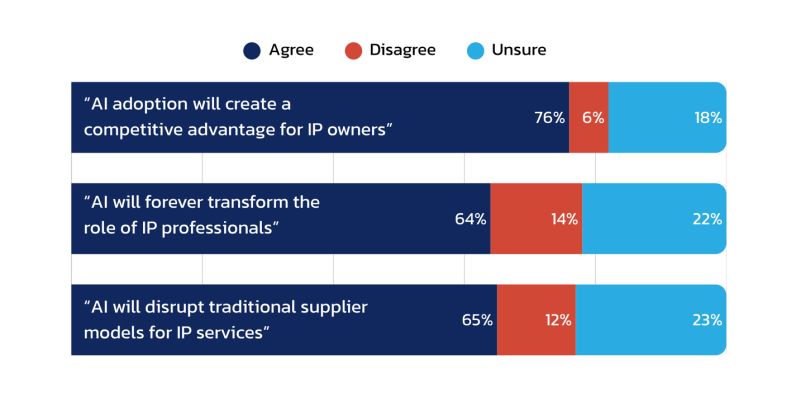
Do You Currently Use AI for IP Management?
- 58% actively use AI solutions for IP, citing a positive impact on their work.
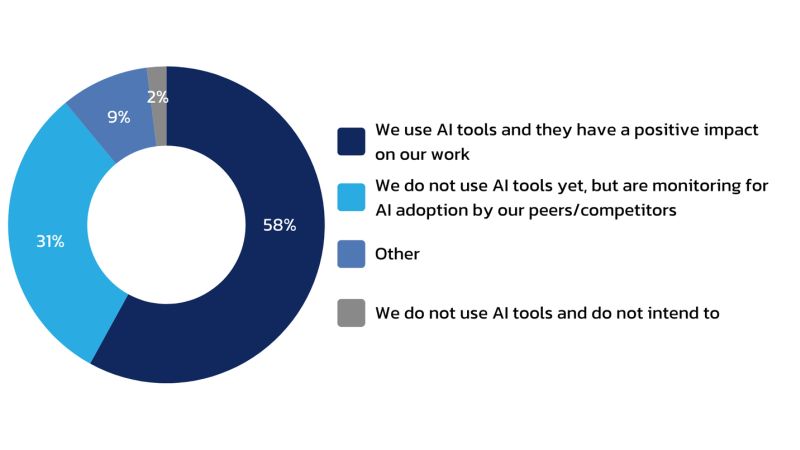
How Often Do You Use AI Solutions for IP?
- 46% use AI solutions for IP at least once a day.
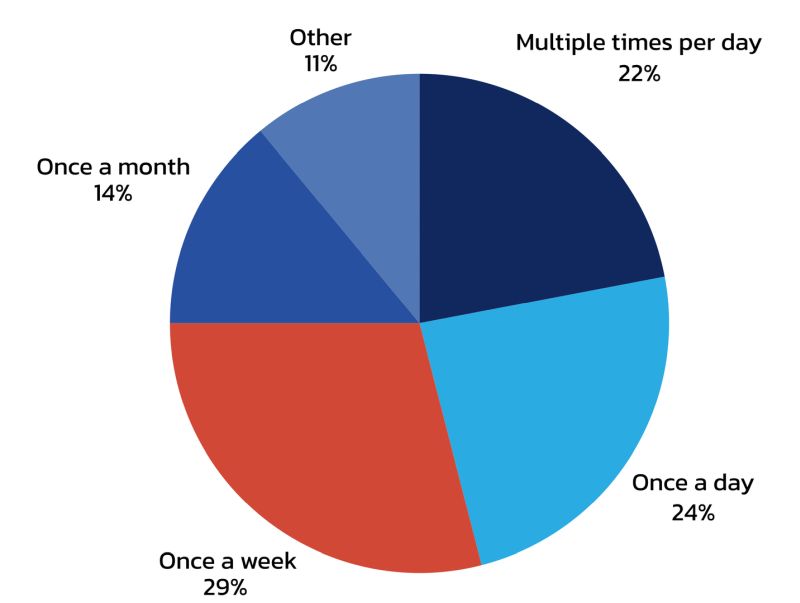
Should IP Service Providers Invest in AI?
- 86% said they would prefer their IP services providers to use AI technologies—12% mandatorily; 74% for specific tasks only.
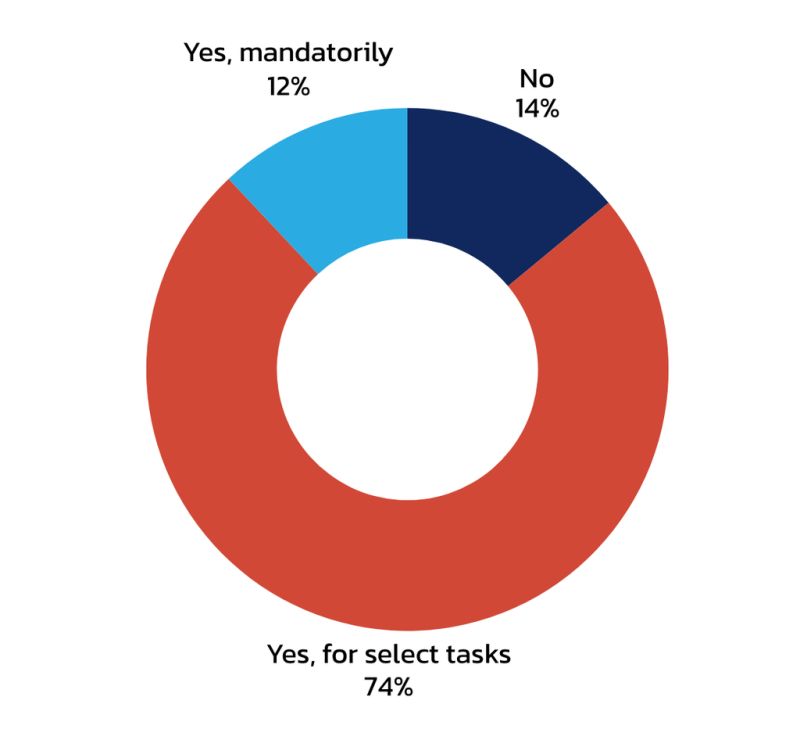
Which IP Management Tasks Can AI Assistants Support?
Today's patent and trademark practitioners are now actively using generative AI assistants (or 'copilots') to streamline everything from product development to patent and trademark protection—all while maintaining the highest standards of security and confidentiality. This includes dedicated solutions for patent and trademark attorney workflows, from AI for trademark search & watch review and goods & service description drafting, and AI for patent drafting and claims mapping.
If you're yet to test out the features and capabilities of AI solutions for your organization (or don't know where to start), read on to discover four practical, real-world use cases of our Qthena AI Assistant—two for trademark and two for patent professionals.
Introducing Qthena, Our AI Assistant for Patent and Trademark Productivity
Trained by IP experts for IP experts, Qthena is our cutting-edge solution for patent and trademark professionals. It supports IP practitioners by consolidating data, workflows, and generative AI capabilities on a single platform.
- What is Qthena?
Qthena is an all-in-one prosecution workflow, data, and collaboration space that centralizes all the different applications needed by IP practitioners, from access to legal databases to word processing tools, and an AI-powered assistant that supports patent and trademark attorney workflows and skills.
- How does Qthena help?
Qthena automatically retrieves file data (from the EPO/EUIPO or USPTO), including official communications, to enable IP practitioners to:
—Efficiently review, annotate, and AI "chat" with one or more documents.
—Quickly summarize, organize, and OCR critical data.
—Collaborate seamlessly from anywhere, with anyone on a single platform.
- Is Qthena confidential and secure?
Qthena uses secure and private versions of AI bots, making sure they contain the latest updates and ensuring client data is not used to train any algorithms.
- Why are we so invested in Qthena?
Firstly, because our clients are requesting AI solutions, and secondly, because we believe that AI can play a crucial role in the future of IP management, so long as AI models are trained securely and efficiently by IP professionals.
Interested in finding out more? Visit our microsite qthena.questel.com to find out more about our exciting AI solution for IP practitioners or watch our recent webinar 'Experience AI Copilots in Action' for an introduction to the platform.
From AI for Trademark Search to AI for Patent Drafting: AI in Action
Let's take a common scenario to explore the patent and trademark attorney skills and workflows that our AI assistant Qthena can support.
Our fictional company 'ShoeCo', a brand producing and selling running shoes worldwide, has a new product to bring to market, featuring an innovative fabric. To prepare, the company wants to clear and file a brand name and obtain a patent to protect the new fabric.
AI for Trademark Search
As a first step, the trademark professional will run (or order) a clearance search on a specialist trademark search platform, such as Markify, covering class 25 for running shoes (and any other classes to be covered by the brand name), plus common law trademark rights.
Depending on the shortlist of proposed names, selected databases, and the search strategy (e.g., knock-out, custom, or comprehensive search), the trademark professional will likely receive too few or too many results to analyze.
After filtering, flagging, or annotating the results on the search platform, their next task would be to create a report and recommendations for the client or internal business unit—and this is where Qthena can step up in support.
Imagine you lack the time to draft comments on the many results you received, or if you have doubts about whether a trademark could be considered similar on absolute grounds in a specific jurisdiction? What if the search has flagged notable high-risk results, and you want to quickly draft a summary of key findings for the report?
By uploading the results into Qthena (as a new "project") or by importing them directly from your Equinox IP management software, you can quickly generate a first draft from which to work:
Step 1
Instruct Qthena to analyze the search report:
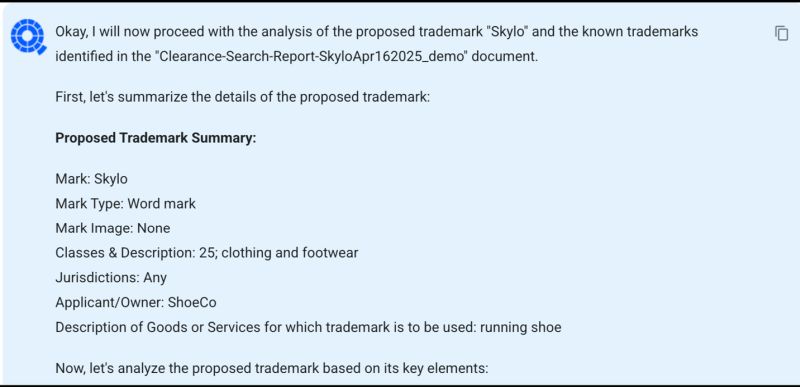
Step 2
Watch as Qthena analyzes your search results and provides structured feedback:
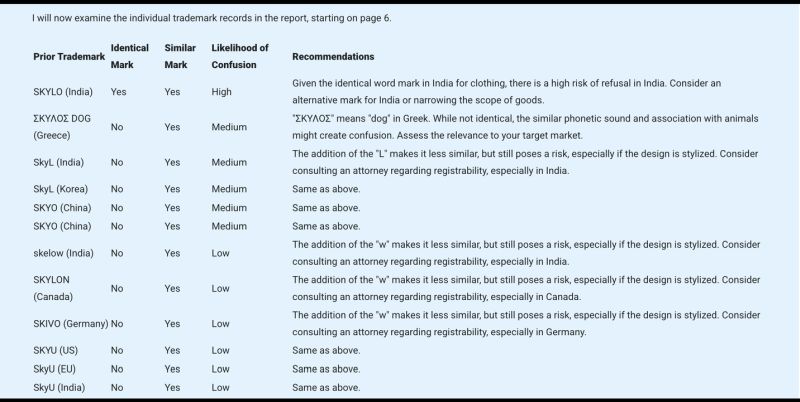
Step 3
Open, OCR search, and annotate the search report directly in Qthena—and share it with other collaborators and guest users in the platform:
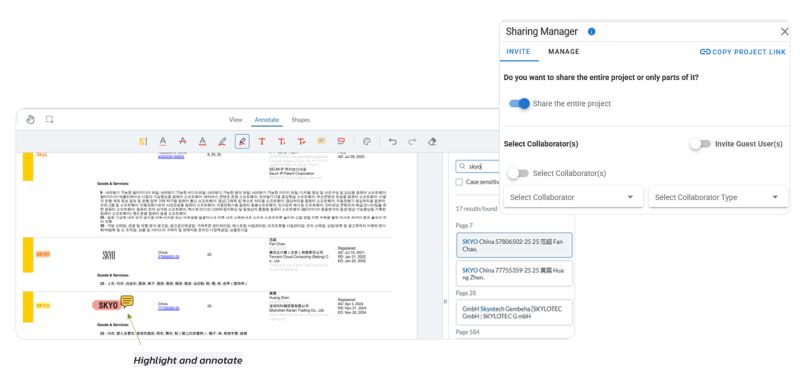
Step 4
Add the final search report to your Equinox IP management software (under documents):
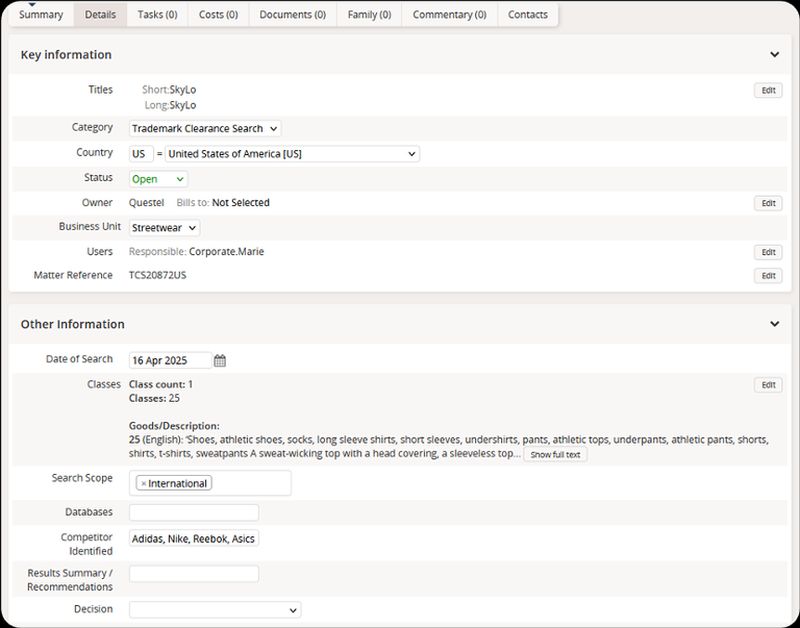
Goods & Services Drafting—How Can Qthena Assist?
Now the trademark has been cleared, the next step is to create the goods and services description before filing the chosen mark.
To draft a goods and services description efficiently, the trademark attorney typically needs to:
- Check prior lists of goods & services
- Suggest similar classifications
- Avoid previously rejected goods & services, and
- Respect jurisdictional guidelines/policies.
To support trademark attorneys, Qthena will analyze your previously registered trademarks and their goods & services descriptions to provide a consistent draft of a new goods/services description, according to EUIPO or USPTO practices.
Thanks to the Markify trademark data API, the system will also later be able to draw on similar trademark applications (same owners or similar domain companies) to help, along with general wording recommendations to help suggest improved goods & services descriptions.
Step 1
Upload a PDF to Qthena containing your previously registered trademarks and their goods & services descriptions:
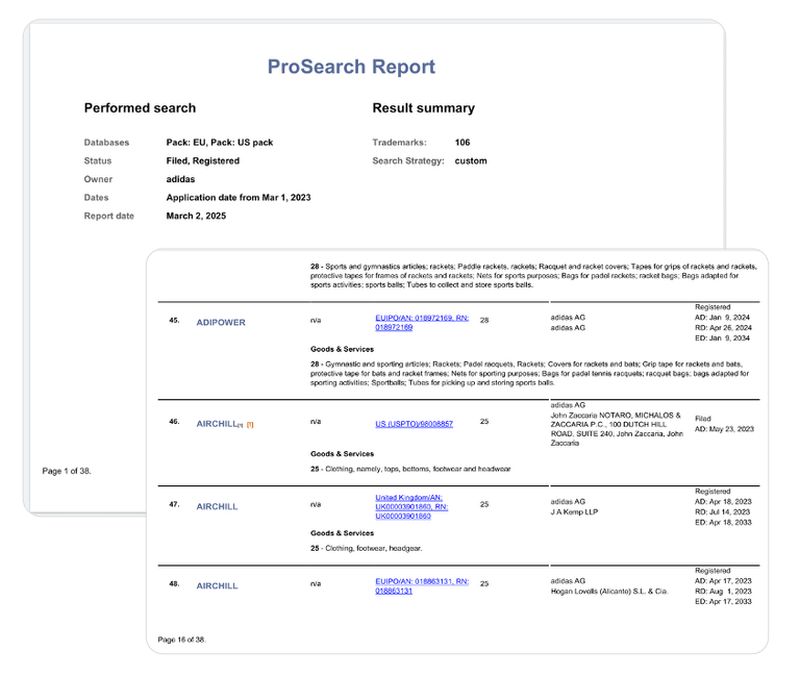
Step 2
Qthena will ask you a few questions to understand the background and focus of the task at hand:
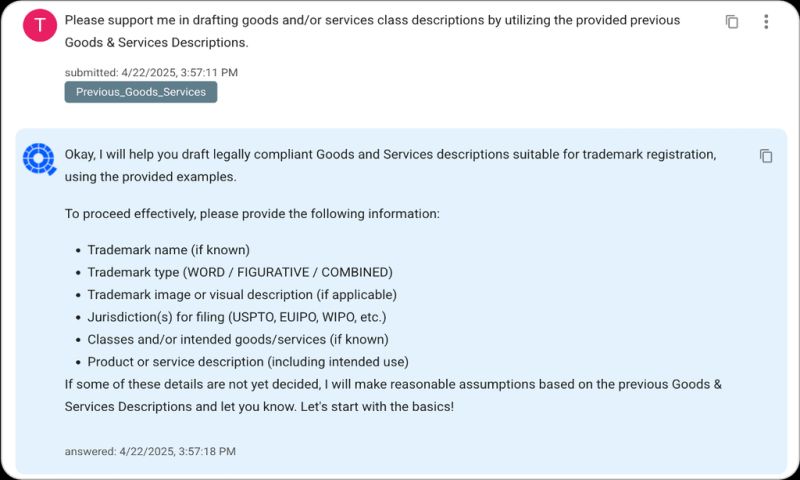
Step 3
Based on your input, Qthena reviews the previously registered trademarks and their goods & services descriptions to generate a first high-quality draft—ready for your final review and refinement:
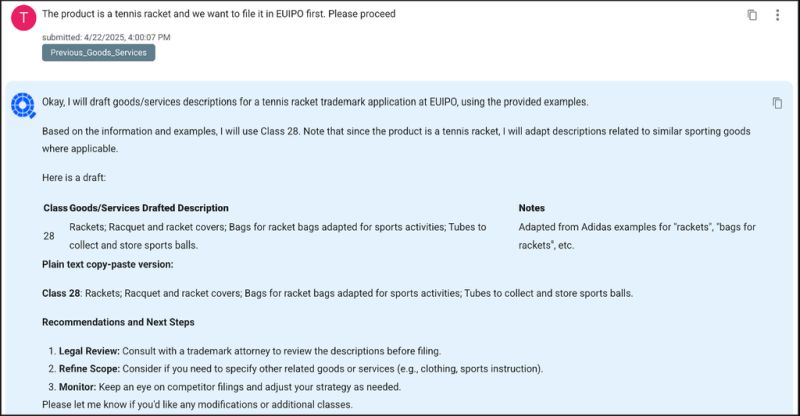
Step 4
You can interact with Qthena during the chat to explore specific details or related topics—enabling Qthena to refine and expand the draft description:
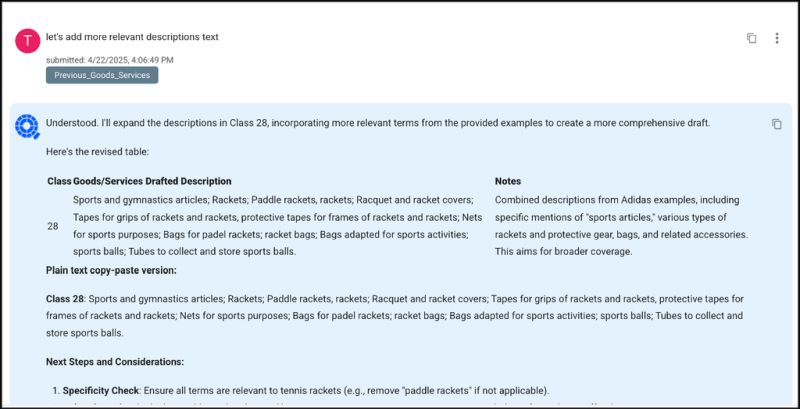
Remember: Qthena is designed to assist, not replace. Your expertise completes the workflow. The more context you can provide, the more tailored and helpful Qthena's draft becomes—always keeping you in control.
Qthena x Equinox: The Benefits of Integration
We have integrated Qthena and our Equinox IP management software at the document level to enable our users to easily import their documents into a Qthena project.
By connecting Qthena to your Equinox IP management software, you can securely retrieve and manage exclusive internal data in both tools.
Simply create a new Qthena project in Equinox or open an existing folder from documents to get started:
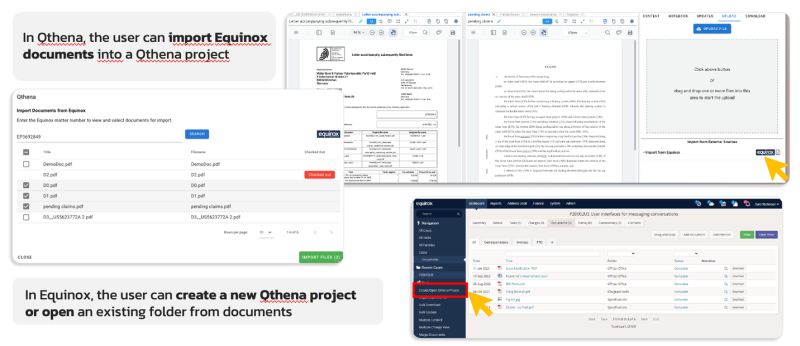
To find out more about integrating Qthena and Equinox, contact our subject matter experts for a product demo today.
AI Assistants for Patent Attorney Skills
Now the trademark tasks are complete, let's look at the patent filing and prosecution process for ShoeCo's new fabric, beginning with patent drafting.
AI for Patent Drafting
Patent drafting requires specialist skills and experience, but AI can still support busy patent practitioners in several key respects. Whether you use our AI assistant to generate first drafts or double-check and validate non-AI-generated drafts, the intuitive tool will enable you to:
- Generate drafts of claims and descriptions based on instructions in natural language—in writing or as vocal prompts, with images as required.
- Enhance your patent drafting process using compliant patent templates, autocomplete, renumbering, and recommendation/suggestion features.
- Identify avoidable issues in your patent drafts that could lead to objections during the patent prosecution process.
- Quickly create document summaries, find quotes, paragraph
and/or figure numbers in your documents, including prior art,
and/or amend claims and write responses to office actions.
Starting with an invention disclosure (or abstract), Qthena can fill in the blanks to create the claims and description for a patent application.
Step 1
Instruct Qthena to draft the patent claim and description from the invention disclosure using the information supplied:
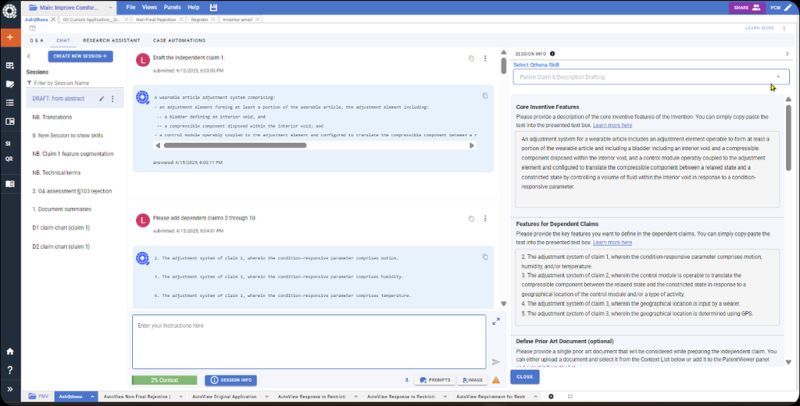
Step 2
Based on the information and prompts you provide, Qthena provides a first draft of the different ps of the patent application for you to review, edit, query, and amend:
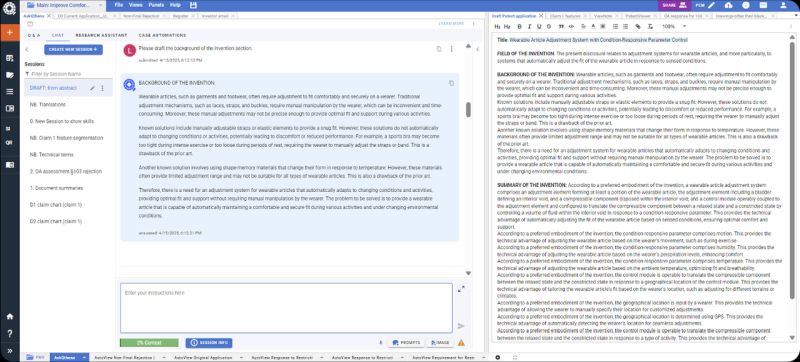
Step 3
pe deeper into the subject area by asking Qthena to create summaries of your current application, prior art, or other uploaded documents. Consider asking for key inventive aspects, problem solved, or additional information:
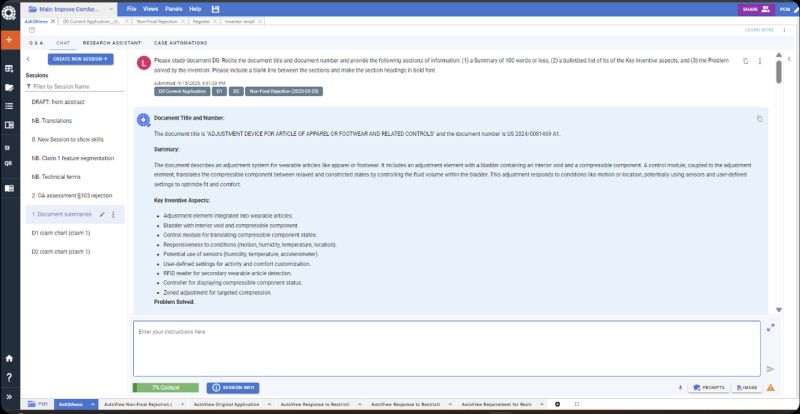
Step 4
Search in documents by asking for quotes, paragraph, and/or figure numbers to find relevant info:
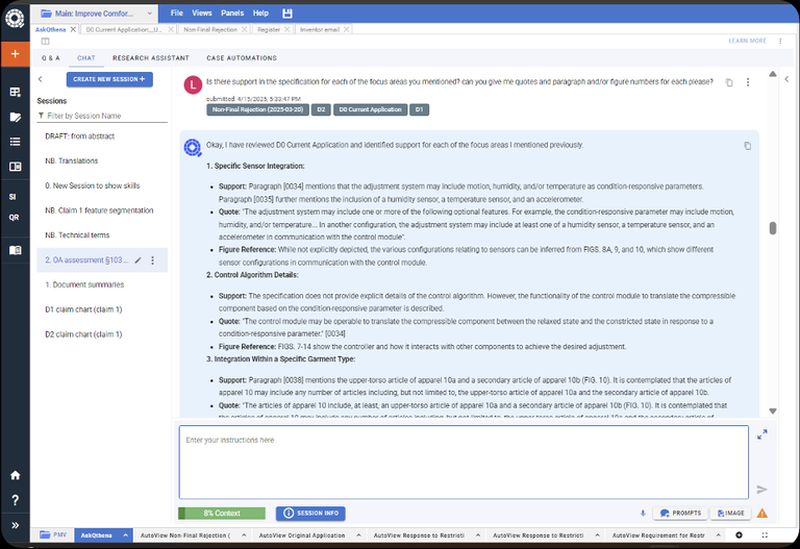
Step 5
Search in images, too. Qthena can "see" inside the drawings:
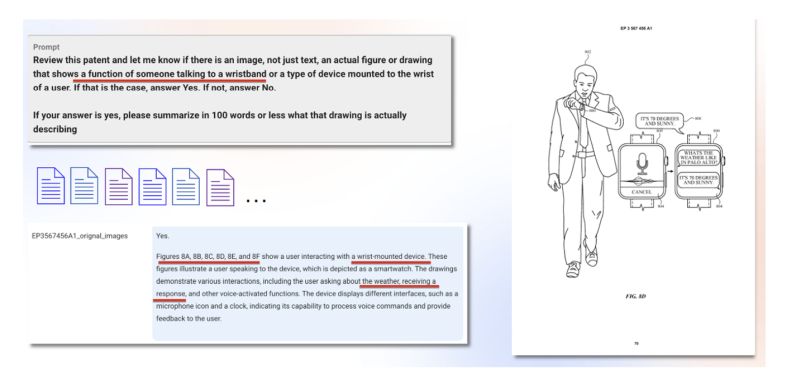
From Office Actions to Translations—AI Assistance for Patent Prosecution
Qthena can recommend changes to claims based on its assessments and/or office action rejections—and draft responses to patent (and trademark) office actions for your review. It can also prepare emails to inventors asking for more information to create the office action response.
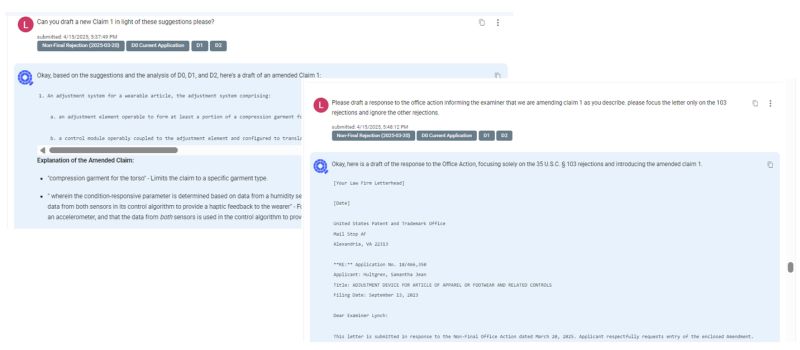
The solution also supports patent practitioners to create claim charts and translations:
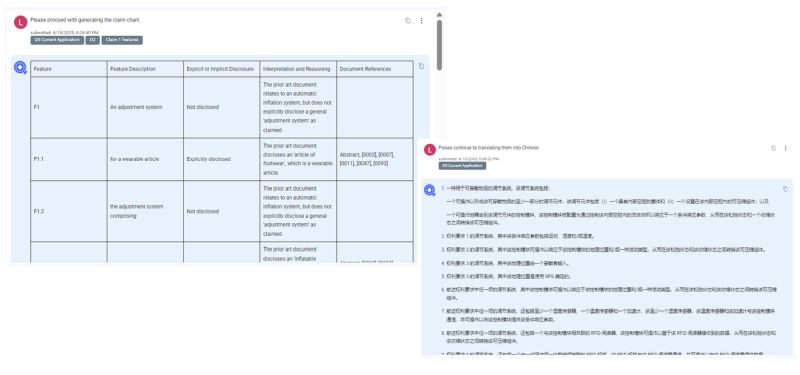
Note: translations are prepared using the same translation system used by the EPO.
And those aren't the only use cases. Qthena also facilitates many other tasks for IP practitioners, from contract review to freedom-to-operate research.
The content of this article is intended to provide a general guide to the subject matter. Specialist advice should be sought about your specific circumstances.

